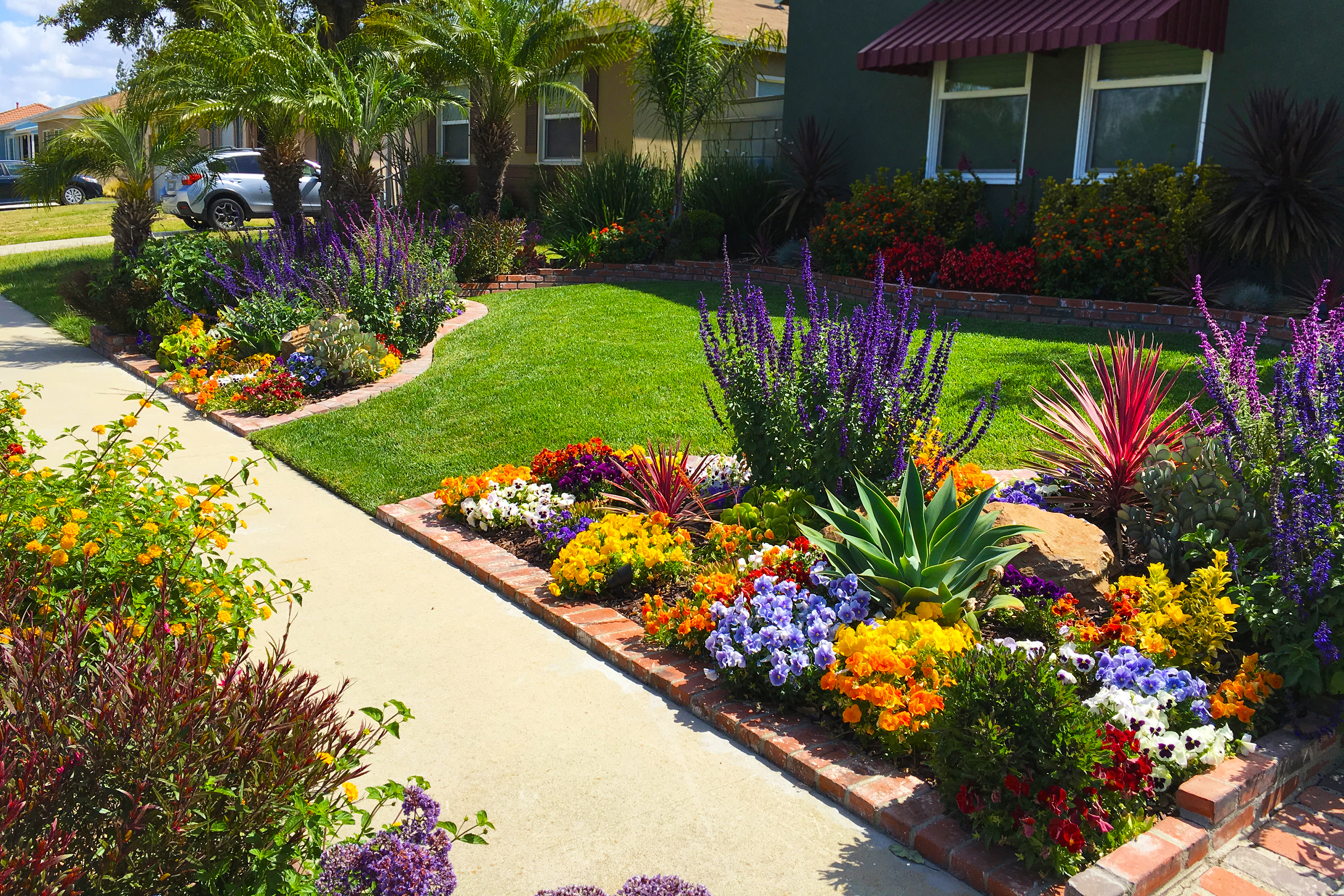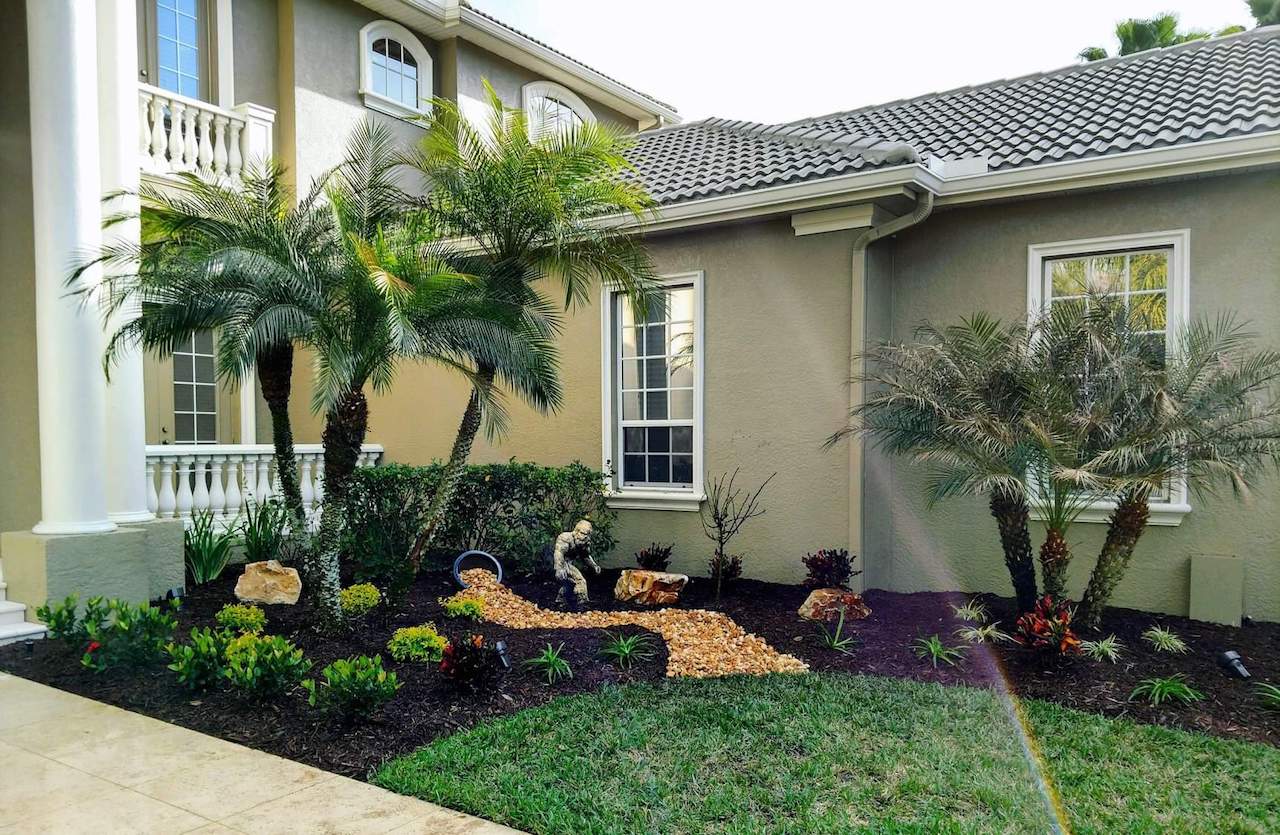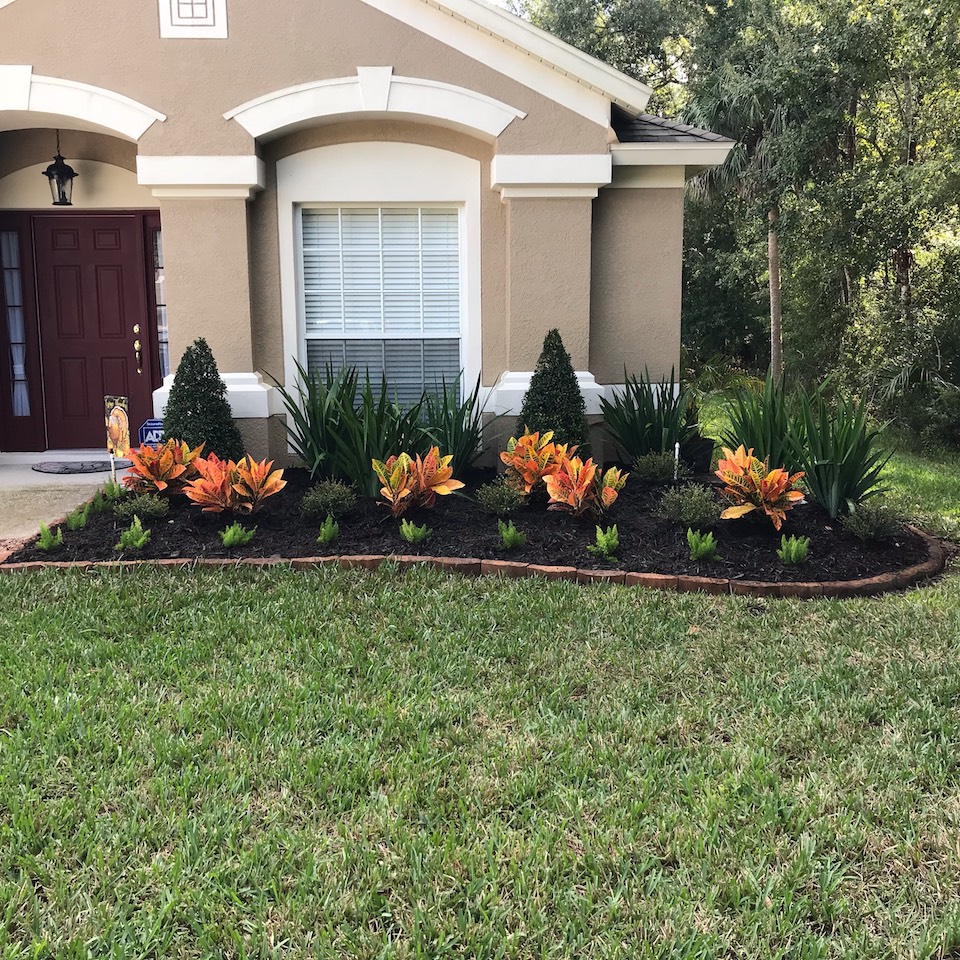The Best Tip to Preserving Your Lawn with Palm Desert Landscaping
The Best Tip to Preserving Your Lawn with Palm Desert Landscaping
Blog Article
A Comprehensive Overview to Creating and Implementing Effective Landscaping Solutions
The art and science of landscaping prolong beyond simple visual appeals; they entail a thoughtful combination of design concepts, environmental stewardship, and practical application. What techniques can one employ to make certain these landscapes not just grow yet also grow in consistency with their surroundings?

Comprehending Landscape Design Concepts
One may question what foundational elements add to effective landscape layout. At its core, successful landscape design depends upon several vital principles that guide the plan and selection of components within a space. These concepts include unity, equilibrium, rhythm, and proportion, each offering to develop a harmonious exterior atmosphere.
Unity refers to the cohesive relationship amongst various parts, making sure that they interact aesthetically and functionally. Balance can be attained through in proportion or asymmetrical setups, permitting the landscape to feel stable and welcoming. Percentage involves understanding the range of elements in regard to each various other and the surrounding setting, promoting visual consistency and convenience.

Analyzing Your Outdoor Area
Before executing the concepts of landscape layout, a comprehensive evaluation of your exterior room is important. This preliminary examination aids define the scope of your landscaping job and makes sure that your layout straightens with the unique qualities of your property. Begin by analyzing the dimensions of your space, taking accurate measurements to comprehend the readily available location for numerous components such as gardens, patios, and pathways.
Following, observe the existing attributes of your landscape, consisting of topography, dirt top quality, and water drainage patterns. These aspects considerably affect plant choice and placement. In addition, assess the sunshine exposure across various locations throughout the day, as this will influence the kinds of plants that grow in your garden.
Take into consideration the microclimates produced by frameworks, trees, and other barriers, as they can impact temperature level and dampness degrees. Take note of any kind of existing plants or hardscape aspects that you desire to maintain or eliminate. This extensive evaluation prepares for a knowledgeable and effective landscape design solution, guaranteeing that your layout is not just visually pleasing however likewise practical and sustainable for many years to find.
Lasting Landscape Design Techniques
These methods not only promote ecological balance but additionally boost the useful and visual worth of a landscape. Implementing efficient irrigation systems, such as drip irrigation, lessens water waste and makes certain that plants receive sufficient wetness (Palm Desert Landscaping).

One more reliable technique is the calculated positioning of trees and shrubs to supply all-natural windbreaks and shade, therefore decreasing power costs (Palm Desert Landscaping). Rain gardens can be incorporated right into the landscape layout to manage stormwater overflow efficiently, filtering system toxins before they enter waterways
Selecting the Right Plant Kingdoms
Picking the right plants for your landscape is essential to accomplishing both aesthetic allure and eco-friendly consistency. The process begins with an understanding of your local climate, soil conditions, and the particular microenvironments within your landscape. Examining variables such as sunshine direct exposure, dampness degrees, and existing vegetations will certainly aid you select plants that flourish in your unique setup.
Take into consideration incorporating indigenous plants, as they are well-adapted to neighborhood conditions, require much less upkeep, and assistance regional wildlife. Furthermore, picking a diverse array of varieties can boost biodiversity while decreasing the danger of condition and insect outbreaks. It is necessary to assess the growth behaviors, growing durations, and seasonal shades of potential plants to develop a dynamic and cohesive landscape.
In addition, assume regarding the meant use the space; for example, if the location will experience high foot traffic, go with resistant ground covers. By thoughtfully selecting plants explanation that line up with both your environmental demands and aesthetic goals, you can develop a sustainable landscape that not just boosts your home however additionally adds favorably to the bordering environment.

Implementation and Maintenance Methods
As soon as the right plants have been chosen for your landscape, the emphasis moves to efficient implementation and recurring maintenance strategies. Successful installment begins with proper site preparation, that includes dirt testing to figure out nutrient levels and pH, adhered to by changing the dirt as required. Meticulously arrange plants according to their development behaviors and light needs, ensuring adequate spacing to site promote healthy development.
Irrigation is a critical aspect of execution. Establish a watering timetable that considers the particular needs of each plant species, adjusting for seasonal changes. Utilizing drip irrigation systems can enhance water efficiency and lower overflow.
Maintenance strategies have to be applied to make sure the durability and vitality of your landscape. Normal tasks include weeding, mulching, and trimming to regulate development and avoid illness. Fertilization needs to be carried out based on dirt tests, providing the needed nutrients without over-fertilizing.
Keeping an eye on for diseases and pests is crucial; early this website discovery can stop substantial damages. Seasonal modifications to maintenance regimens, such as preparing and winterizing perennials for springtime development, will make sure that your landscape remains healthy and balanced and aesthetically attractive year-round.
Conclusion
Successful application and recurring upkeep further guarantee the durability and vigor of landscapes. By incorporating these components, landscapes can be transformed into stunning, practical settings that advertise biodiversity and contribute positively to neighborhood wellness.
One may question what fundamental components add to effective landscape layout. At its core, successful landscape layout hinges on a number of key concepts that guide the setup and option of elements within a space.Selecting the right plants for your landscape is crucial to achieving both visual appeal and ecological harmony. It is crucial to examine the growth practices, blooming durations, and seasonal shades of prospective plants to develop a cohesive and vibrant landscape.
Once the right plants have been picked for your landscape, the focus changes to effective application and recurring upkeep strategies.
Report this page